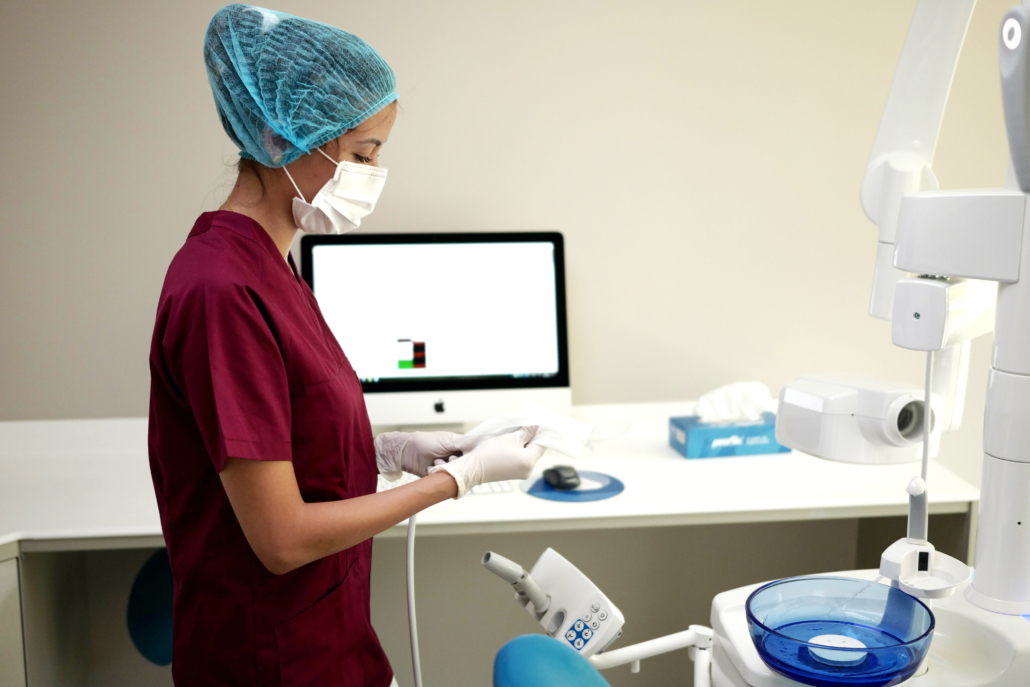Dental emergency : assess and react
A dental emergency is a situation of acute pain experienced by a patient. This condition may be accompanied by infection, fever and swollen mucous membranes.
This state may be accompanied by infection, fever, and swelling of the mucous membranes. In dentistry, emergencies are classified into three groups:
- Infectious dental emergency: relates to the inside of the tooth: pulpitis (acute tooth pain), abscess;
- Dental trauma emergency: caused by a broken or expelled tooth (a whole tooth out of the tooth socket, following a trauma), and
- Cosmetic emergency: broken tooth, unsealed bridge, or detached dental brace.
In the first two cases, immediate intervention is necessary to relieve the patient and eliminate the intense pain being felt.
1. WHAT TO DO IMMEDIATELY?
In the event of a dental emergency, immediately call your regular dentist – if you have one and if the clinic is open.
Should this not be the case, the Smile and Care dental clinics at Eaux-Vives and Grand-Saconnex are open 7 days a week.

2. HOW DOES THE PROCEDURE WORK?
The examination begins with the patient’s history and the assessment of the emergency:
- How did the pain appear?
- What is the pattern of the pain and how intense is it?
The next step is to examine the affected tooth/teeth as well as the pain’s location.
A dental X-ray may also be required to enable diagnosis.
3. DIAGNOSIS: RECOGNISING MAJOR DENTAL EMERGENCIES
Pulpitis: painful inflammation
Pulpitis is a painful inflammation of the dental pulp – the innermost part of the tooth – which contains the nerve fibres and blood vessels.
Pulpitis is recognised by a sharp pain in reaction to heat, cold, and sweet. Migraines and pain during chewing – or even spontaneous bleeding of the gums – may also occur. Pain can appear at any time. If not treated in time, it can prompt an infection in which a dental abscess forms at the root of the tooth. Left untreated, such an infection of the tooth can spread to the jaw or other parts of the body, such as the sinuses.

Alveolitis following tooth extraction
Alveolitis (or “dry socket”) refers to the inflammation of the dental alveoli, the small cavity in the jaw bone in which the tooth is attached. It is the most common complication following tooth extraction.
Dental or gingival abscess: an infectious emergency
Infectious dental emergencies account for nearly 35% of dental emergencies. This includes dental abscesses; these occur as a result of the proliferation of bacteria in part of the mouth. Signs of dental abscess are:
- Swelling in the gum that turns red
- Sensation of heat, or even bleeding
- Chewing problems
Fever and fatigue can also be concurrent symptoms.

If you experience persistent pain that prevents you from working or sleeping, take pain relief and seek immediate attention.
Dental trauma (often accidental)
Dental trauma most often occurs as a result of sports activity, a fall, or an accident at home and can include broken or moving teeth. To both prevent pulp infection and save the tooth, it is important to see a dentist for an emergency appointment.
4. HOW TO AVOID DENTAL EMERGENCIES
With the exception of dental trauma, the majority of dental emergencies can be avoided by consulting a dental hygienist once or twice a year (see link on treatment page) and by having an annual check-up with your dentist.


Care and emergencies 6 days a week, Monday to Saturday
